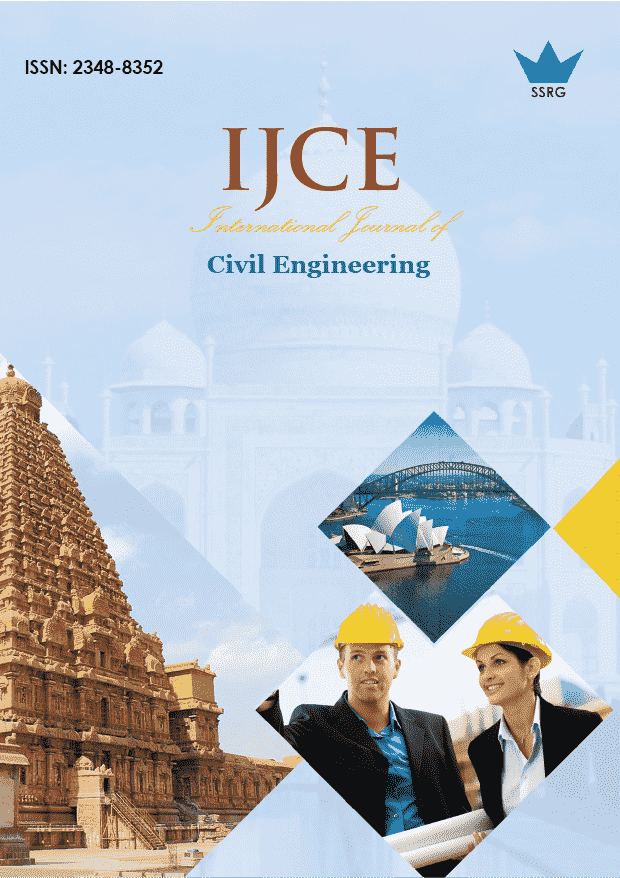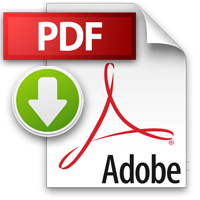Design of an Iterative Hybrid Deep Learning and GIS-MCDM Framework for Predictive High-Speed Rail Alignment Under Spatiotemporal and Uncertainty Constraints

| International Journal of Civil Engineering |
| © 2025 by SSRG - IJCE Journal |
| Volume 12 Issue 10 |
| Year of Publication : 2025 |
| Authors : Yogesh P. Kherde, Uday P. Waghe, Radhika S. Thakre, Rajesh M. Bhagat, Anup K. Chitkeshwar, Vaibhav Dhawale, Vinay K Jha, Sanyogita P Rathod, Sujal R Kahate |
How to Cite?
Yogesh P. Kherde, Uday P. Waghe, Radhika S. Thakre, Rajesh M. Bhagat, Anup K. Chitkeshwar, Vaibhav Dhawale, Vinay K Jha, Sanyogita P Rathod, Sujal R Kahate, "Design of an Iterative Hybrid Deep Learning and GIS-MCDM Framework for Predictive High-Speed Rail Alignment Under Spatiotemporal and Uncertainty Constraints," SSRG International Journal of Civil Engineering, vol. 12, no. 10, pp. 121-138, 2025. Crossref, https://doi.org/10.14445/23488352/IJCE-V12I10P110
Abstract:
The alignment planning of HSR tracks should be intelligent, resilient to future uncertainties, and able to satisfy dynamic changes of the environment, city agglomeration, and the social-economy. The existing methods that mainly use deterministic static GIS-MCDM models and GIS-based spatial models subconsciously fail to draw several spatiotemporal variabilities and uncertainties linked with the expected long-term landscape evolution; that is, they are not predictive, they do not include unnecessary uncertainties, and they have weighted their criteria as fixed values; due to their lack of credibility in planning practices, their use probably may not be highly relevant for real-world planning scenarios. Mindful of the limitations mentioned above, the research proposes a hybrid framework integrating deep learning with GIS-analytical MCDM to optimally align the tracks of HSRs in a predictive mode. Land-use changes and environmental risks are envisaged through the ST-GCN by using historical satellite remote sensing imagery to facilitate the accurate prediction of future status in a multi-temporal manner. Subsequently, under diverse climate and urban growth scenarios, the probability distributions of risk maps will be created by the Conditional Variational Autoencoders (C-VAE), thereby providing measures of uncertainty with 1,000-plus plausible futures. The criteria involved in making decisions will vary with changing predictions by a Hybrid Spatial-Temporal Attention Mechanism that will enable GIS-MCDM layers to be reweighted in real-time based on the predicted evolution of hotspots. Using a reinforcement-learning scheme, Deep Reinforcement Learning (DRL) will further optimize the core alignment by learning the routing strategies that minimize risk exposure and maximize compatibility with future conditions. Its ever-so Multi-Fidelity Bayesian will integrate cadastral data with multiple sources into the complex process. Data Fusion is used for high/low-res data synthesis and provides uncertainty-enabled input maps to steer the DRL and MCDM processes. This proposal will increase alignment robustness by 30%. Sharpened the conflict score without changing the prediction uncertainty inside ±10% accuracy of the true value in the process. This is a step that leads to adaptive, data-informed, and resilient Design of HSR infrastructure for long-term spatiotemporal variability in the process.
Keywords:
Spatiotemporal Prediction, High-Speed Rail, Deep Learning, GIS-MCDM, Alignment Optimization, Process.
References:
[1] Jinxin Yang et al., “CSANet: Contour and Semantic Feature Alignment Fusion Network for Rail Surface Defect Detection,” IEEE Signal Processing Letters, vol. 30, pp. 972-976, 2023.
[CrossRef] [Google Scholar] [Publisher Link]
[2] Taoran Song, Paul Schonfeld, and Hao Pu, “A Review of Alignment Optimization Research for Roads, Railways and Rail Transit Lines,” IEEE Transactions on Intelligent Transportation Systems, vol. 24, no. 5, pp. 4738-4757, 2023.
[CrossRef] [Google Scholar] [Publisher Link]
[3] Li Wei et al., “Concurrent Optimization of Subway Vertical Alignments and Station Elevations with Improved Particle Swarm Optimization Algorithm,” IEEE Transactions on Intelligent Transportation Systems, vol. 23, no. 12, pp. 24929-24940, 2022. [CrossRef] [Google Scholar] [Publisher Link]
[4] Guangdong Qi et al., “An Adaptive Gaussian-Guided Feature Alignment Network for Cross-Condition and Cross-Machine Fault Diagnosis of Rolling Bearings,” IEEE Sensors Journal, vol. 24, no. 24, pp. 41647-41658, 2024.
[CrossRef] [Google Scholar] [Publisher Link]
[5] Shuai Ma et al., “Shape-Consistent One-Shot Unsupervised Domain Adaptation for Rail Surface Defect Segmentation,” IEEE Transactions on Industrial Informatics, vol. 19, no. 9, pp. 9667-9679, 2023.
[CrossRef] [Google Scholar] [Publisher Link]
[6] Xiao Zhang et al., “Partial Domain Adaptation Method Based on Class-Weighted Alignment for Fault Diagnosis of Rotating Machinery,” IEEE Transactions on Instrumentation and Measurement, vol. 71, pp. 1-14, 2022.
[CrossRef] [Google Scholar] [Publisher Link]
[7] Hao Pu et al., “Multi-Task Deep Learning Methods for Determining Railway Major Technical Standards,” IEEE Transactions on Intelligent Transportation Systems, vol. 25, no. 6, pp. 5904-5918, 2024.
[CrossRef] [Google Scholar] [Publisher Link]
[8] Wen-Qiang Liu, and Su-Mei Wang, “The Low-Illumination Catenary Component Detection Model Based on Semi-Supervised Learning and Adversarial Domain Adaptation,” IEEE Transactions on Instrumentation and Measurement, vol. 74, pp. 1-11, 2025.
[CrossRef] [Google Scholar] [Publisher Link]
[9] Zhenzhong He et al., “Prototype Space Boundary Alignment Network for Bearing Continuous Fault Diagnosis under Class-Incremental Scenarios,” IEEE Sensors Journal, vol. 25, no. 1, pp. 1076-1085, 2025.
[CrossRef] [Google Scholar] [Publisher Link]
[10] Yonghua Jiang et al., “Cross-Conditions Fault Diagnosis of Rolling Bearing Based on Transitional Domain Adversarial Network,” IEEE Sensors Journal, vol. 25, no. 1, pp. 1978-1993, 2025.
[CrossRef] [Google Scholar] [Publisher Link]
[11] Guiting Tang et al., “Integrating Demodulation Techniques with Multis ource Transfer Learning for Intelligent Fault Diagnosis of Bearings,” IEEE Transactions on Instrumentation and Measurement, vol. 74, pp. 1-10, 2025.
[CrossRef] [Google Scholar] [Publisher Link]
[12] Hongming Liu et al., “Dynamic Responses of Ballastless High-Speed Railway Due to Train Passage with Excitation of Uneven Trackbed Settlement,” IEEE Transactions on Intelligent Transportation Systems, vol. 23, no. 11, pp. 22244-22257, 2022.
[CrossRef] [Google Scholar] [Publisher Link]
[13] Liyuan Wang et al., “Harmful Data Enhanced Anomaly Detection for Quasi-Periodic Multivariate Time Series,” Applied Intelligence, vol. 55, 2025.
[CrossRef] [Google Scholar] [Publisher Link]
[14] Tiong Kah Yong, Zhenliang Ma, and Carl-William Palmqvist, “AP-GRIP Evaluation Framework for Data-Driven Train Delay Prediction Models: Systematic Literature Review,” European Transport Research Review, vol. 17, pp. 1-21, 2025.
[CrossRef] [Google Scholar] [Publisher Link]
[15] Nengye Mu et al., “Vulnerability Analysis of China’s Air and High-Speed Rail Composite Express Network under Different Node Attack Strategies,” Annals of Operations Research, 2023.
[CrossRef] [Google Scholar] [Publisher Link]
[16] Jingde Li et al., “A New Probability Guided Domain Adversarial Network for Bearing Fault Diagnosis,” IEEE Sensors Journal, vol. 23, no. 2, pp. 1462-1470, 2023.
[CrossRef] [Google Scholar] [Publisher Link]
[17] Shengfu Yu, Yang Wang, and Zhongyi Zhang, “Monitoring Process Parameters and Predicting Rail Steel Welded Joint Microstructure and Mechanical Property of Three-Wire Fusion Nozzle Electroslag Welding,” Welding in the World, vol. 69, pp. 1229-1240, 2025.
[CrossRef] [Google Scholar] [Publisher Link]
[18] Lei Li et al., “Design and Validation of an Alignment Free Adaptive Joint Torque Measurement System,” BioMedical Engineering OnLine, vol. 24, 2025.
[CrossRef] [Google Scholar] [Publisher Link]
[19] Xin Lin, Zipeng Li, and Suxu Lin “Can Macroprudential Policy Rail for Green Innovation? Evidence from Chinese Energy Enterprises,” Environment, Development and Sustainability, 2024.
[CrossRef] [Google Scholar] [Publisher Link]
[20] Lei Xia et al., “Resilience-Oriented Passenger Subsidy Design for Taxi Travel under Pandemic Control,” EPJ Data Science, vol. 14, pp. 1-22, 2025.
[CrossRef] [Google Scholar] [Publisher Link]
[21] Zhao Tang, Yuwei Hu, and Zhiming Qu, “Enhancing Nonlinear Dynamics Analysis of Railway Vehicles with Artificial Intelligence: A State-of-the-art Review,” Nonlinear Dynamics, vol. 112, pp. 14687-14717, 2024.
[CrossRef] [Google Scholar] [Publisher Link]
[22] Simai Yang et al., “Identifying Key Influencing Factors of Cross-Regional Railway Infrastructure Interconnection: A Fuzzy Integrated MCDM Framework,” Humanities and Social Sciences Communications, vol. 12, pp. 1-22, 2025.
[CrossRef] [Google Scholar] [Publisher Link]
[23] Rebecca Cort, and Jessica Lindblom, “Remote Situatedness Beyond the Control Room: Enhanced Seeing and Sense of Place in Railway Operations,” Cognition, Technology & Work, vol. 27, pp. 375-400, 2025.
[CrossRef] [Google Scholar] [Publisher Link]
[24] Agustinus Winarno et al., “Roles of Vibration-Based Machine Learning Algorithms in Railway Vehicle Monitoring for Track Condition Assessment: A Review,” Journal of Vibration Engineering & Technologies, vol. 13, 2025.
[CrossRef] [Google Scholar] [Publisher Link]
[25] Rongli Cai, “Measurement Model and Accuracy Analysis of Parabolic Ballistic Projectile Flight Parameters based on Random Matrix,” Journal of Engineering Mathematics, vol. 144, 2024.
[CrossRef] [Google Scholar] [Publisher Link]
[26] Rogers Mwesigwa et al., “Critical Success Factors for Public-Private Partnership Projects in Uganda,” SN Business & Economics, vol. 4, 2024.
[CrossRef] [Google Scholar] [Publisher Link]
[27] Bittu Ghosh, and Somnath Karmakar, “Assessing the Causes of Claims in Highway Construction Projects with a Case Study: a Construction Practitioner’s Perspective,” Asian Journal of Civil Engineering, vol. 25, pp. 3035-3048, 2024.
[CrossRef] [Google Scholar] [Publisher Link]
[28] Henry Ataburo, Getrude Effah Ampong, and Dominic Essuman, “Developing Operational Resilience to Navigate Transportation Disruptions: The Role and Boundaries of Efficiency Priority,” Annals of Operations Research, vol. 340, pp. 723-755, 2024.
[CrossRef] [Google Scholar] [Publisher Link]
[29] Lulu Wang et al., “Physics-Informed Online Deep Learning for Advanced Control of Shield Tail Clearance in Tunnel Construction,” Frontiers of Engineering Management, 2025.
[CrossRef] [Google Scholar] [Publisher Link]
[30] José G.P. Oliveira et al., “Dynamic Testing and Finite Element Model Updating for a Viaduct Structural Assessment,” Journal of Civil Structural Health Monitoring, vol. 15, pp. 2279-2297, 2025.
[CrossRef] [Google Scholar] [Publisher Link]
[31] K. Shivaram, Navyasree Kolli, and Hari Krishna Gaddam, “Evaluating the Integration of Metro Networks in Urban Logistics: A Case Study of Indian Cities using TOPSIS Methodology,” Innovative Infrastructure Solutions, vol. 10, 2025.
[CrossRef] [Google Scholar] [Publisher Link]
[32] Selin Yalçın, and Ertuğrul Ayyıldız, “Prioritizing Freight Carrier Selection Factors with the Best Worst Method,” Central European Journal of Operations Research, vol. 33, pp. 1133-1148, 2025.
[CrossRef] [Google Scholar] [Publisher Link]
[33] Jianbo Lai et al., “A Multi-Factor-Driven Approach for Predicting Surface Settlement Caused by the Construction of Subway Tunnels by Undercutting Method,” Environmental Earth Sciences, vol. 83, 2024.
[CrossRef] [Google Scholar] [Publisher Link]
[34] Yanheng Guo et al., “A Novel Five-Axis On-Machine Measurement Error Prediction Model Considering Positioning Errors of Machine Tool,” The International Journal of Advanced Manufacturing Technology, vol. 132, pp. 2971-2989, 2024.
[CrossRef] [Google Scholar] [Publisher Link]
[35] Natasha Chiswa, “Unlocking Africa’s Economic Potential: The Role of PPPs in Fuelling Infrastructure Development and Investment–South Africa’s Perspective,” Jindal Global Law Review, vol. 15, pp. 157-185, 2024.
[CrossRef] [Google Scholar] [Publisher Link]
[36] Tzu-Chi Chan et al., “Dynamic Characterization and Optimization of Moving Platforms for Enhancing Precision in Semiconductor Point Testing Equipment,” International Journal on Interactive Design and Manufacturing (IJIDeM), vol. 19, pp. 4295-4312, 2025.
[CrossRef] [Google Scholar] [Publisher Link]
[37] Abhijit Arvind Mohite, and Emil Mathew, “Exploring the Necessary Upgrades in Port Infrastructure to Accommodate and Support the Operation of the Next-Generation Green Ships,” Marine Systems & Ocean Technology, vol. 20, pp. 1-14, 2025.
[CrossRef] [Google Scholar] [Publisher Link]
[38] Viviana Sastre Gomez et al., “Duration is not a Reliable Indicator for Anticipating Event Boundaries,” Computational Brain & Behavior, pp. 1-15, 2025.
[CrossRef] [Google Scholar] [Publisher Link]
[39] Tianshi Hu et al., “Vision-Based Welding Quality Detection of Steel Bridge Components in Complex Construction Environments,” Urban Lifeline, vol. 3, pp. 1-22, 2025.
[CrossRef] [Google Scholar] [Publisher Link]
[40] Tarutal Ghosh Mondal et al., “Class-wise Histogram Matching-Based Domain Adaptation in Deep Learning-based Bridge Element Segmentation,” Journal of Civil Structural Health Monitoring, vol. 15, pp. 1973-1989, 2025.
[CrossRef] [Google Scholar] [Publisher Link]

 10.14445/23488352/IJCE-V12I10P110
10.14445/23488352/IJCE-V12I10P110